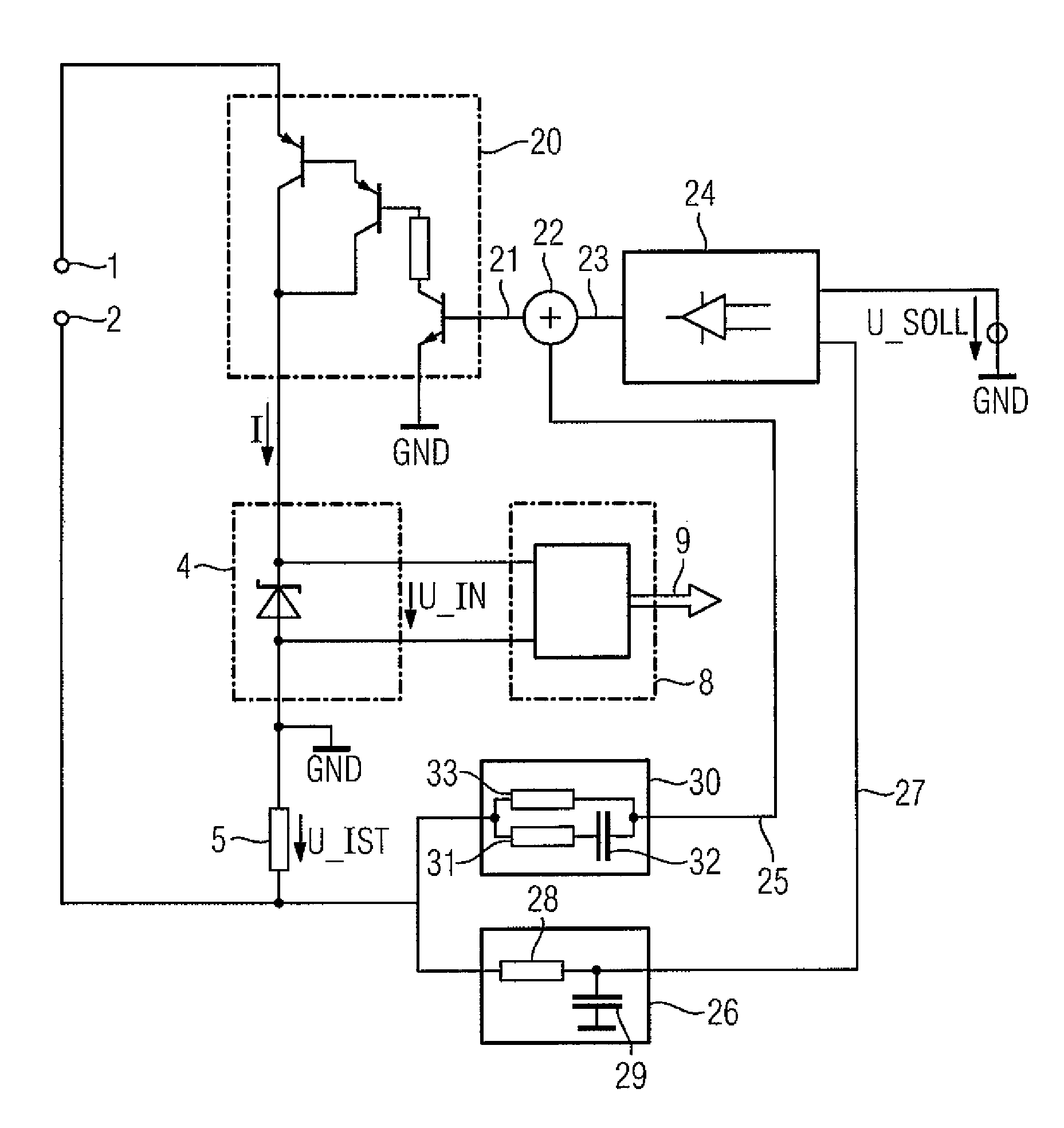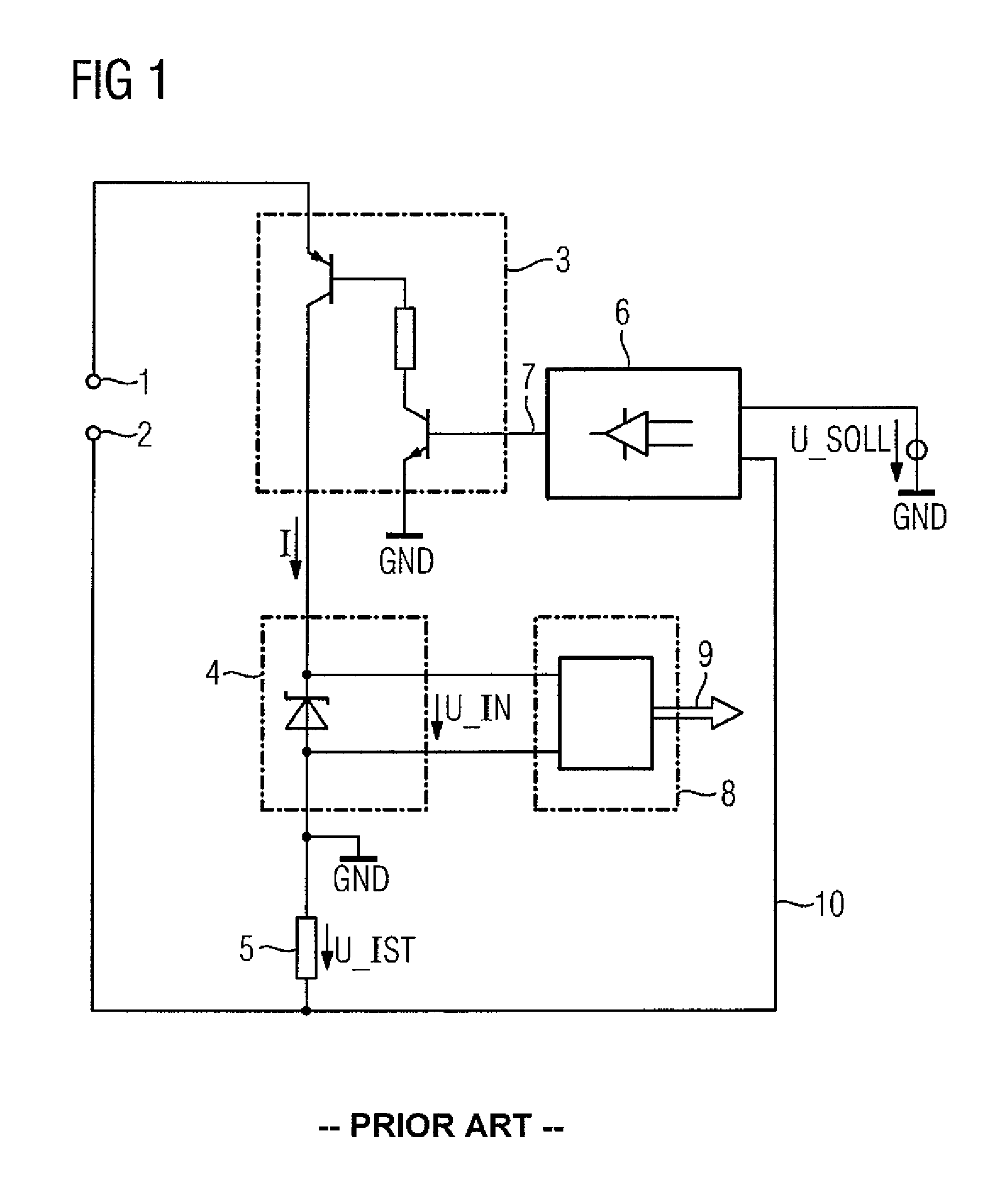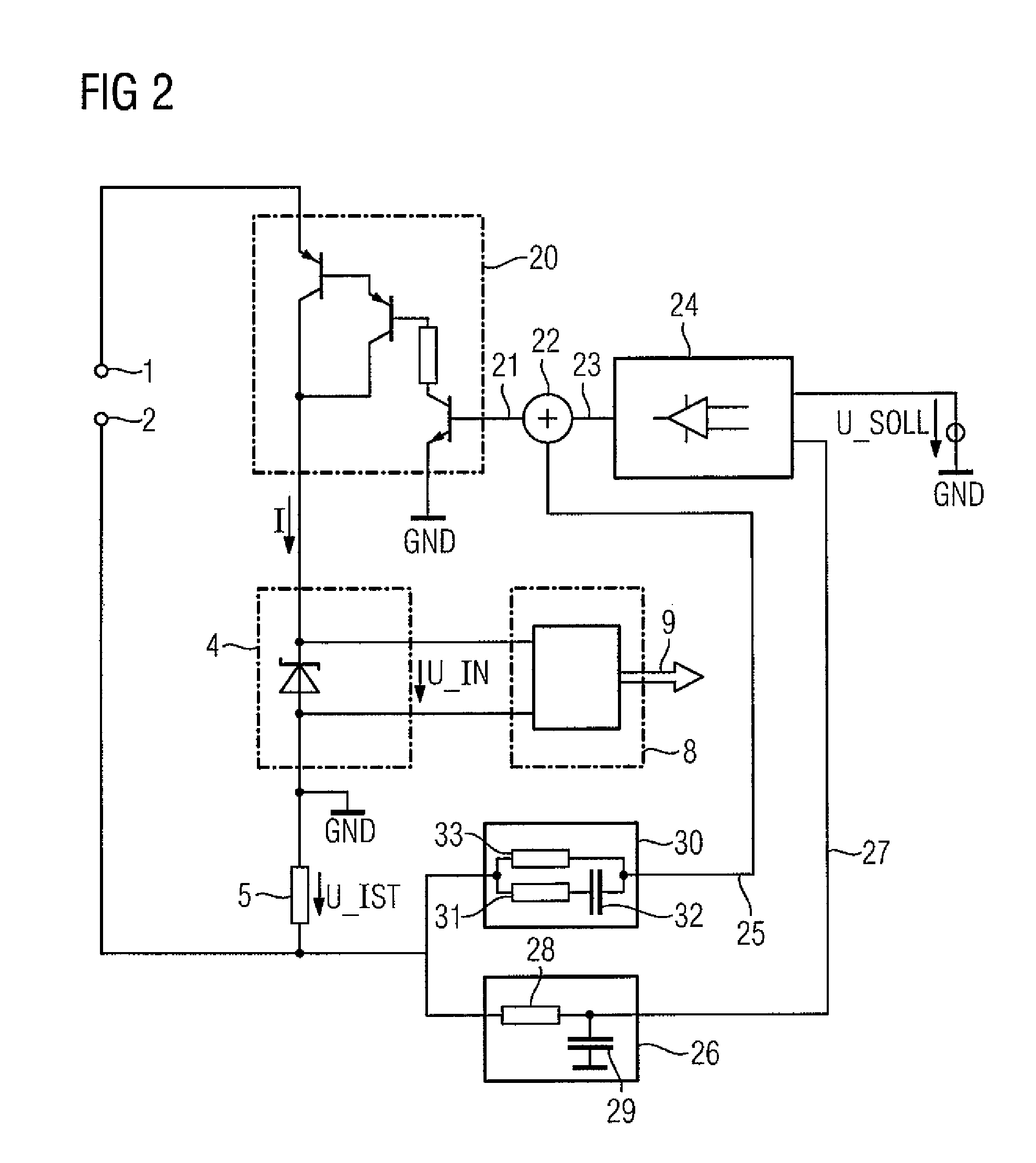Field device for process instrumentation
a field device and process instrument technology, applied in the field of process instruments, can solve the problems of reducing the power available for supplying electronics by a further 3%, unable to produce drive current, and amplifiers with a comparatively high power consumption, so as to reduce the current drawn by the output stage, reduce disturbances, and reduce the effect of curren
- Summary
- Abstract
- Description
- Claims
- Application Information
AI Technical Summary
Benefits of technology
Problems solved by technology
Method used
Image
Examples
Embodiment Construction
[0025]As already explained in more detail above, FIG. 1 shows an outline circuit of an output stage of a 4-20 mA interface as is used in a conventional SITRAS P pressure measurement transducer.
[0026]Many parts of the known output stage shown in FIG. 1 are shown again in the exemplary embodiment of an output stage in FIG. 2. These are provided with the same reference symbols in both figures.
[0027]A transistor circuit 20 that contains a Darlington stage is now used in the output stage shown in FIG. 2. This Darlington circuit is distinguished by a considerably higher gain, thus allowing a signal 21 with relatively low signal power to be used to operate it. In the illustrated exemplary embodiment, the signal 21 is produced by a summation point 22 to which a control signal 23, which is output from a regulator 24, and a compensation signal 25 are passed. The measurement resistor 5 is used in the known manner as a way to detect the loop current I as an actual value U_ACT. This actual value...
PUM
 Login to View More
Login to View More Abstract
Description
Claims
Application Information
 Login to View More
Login to View More - R&D
- Intellectual Property
- Life Sciences
- Materials
- Tech Scout
- Unparalleled Data Quality
- Higher Quality Content
- 60% Fewer Hallucinations
Browse by: Latest US Patents, China's latest patents, Technical Efficacy Thesaurus, Application Domain, Technology Topic, Popular Technical Reports.
© 2025 PatSnap. All rights reserved.Legal|Privacy policy|Modern Slavery Act Transparency Statement|Sitemap|About US| Contact US: help@patsnap.com



